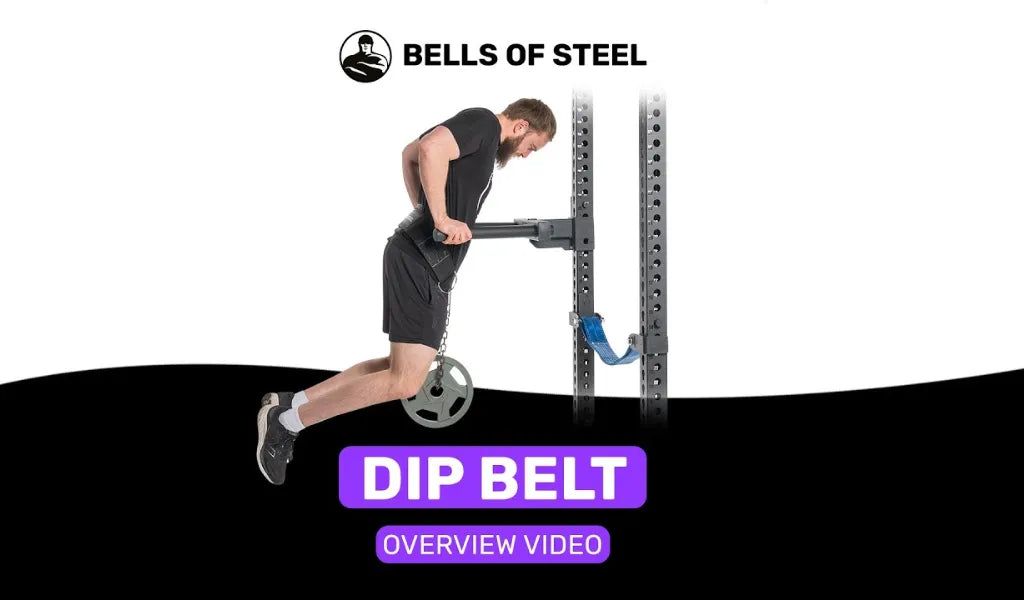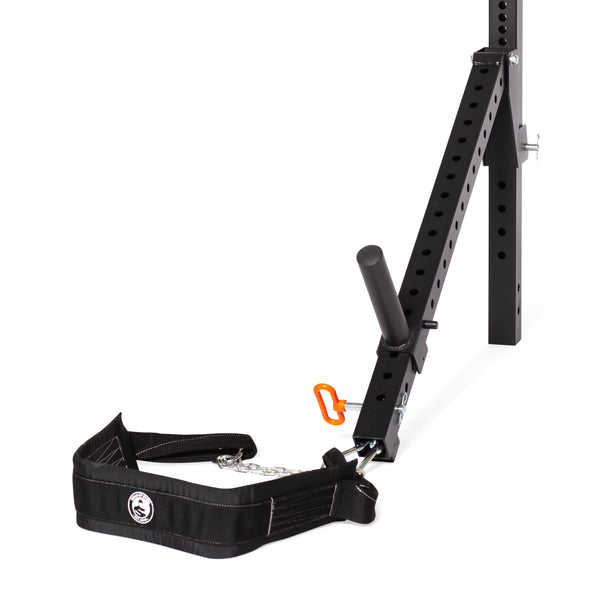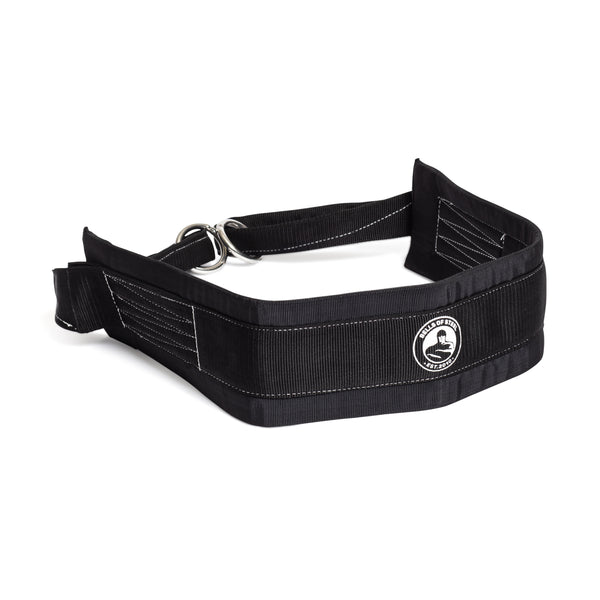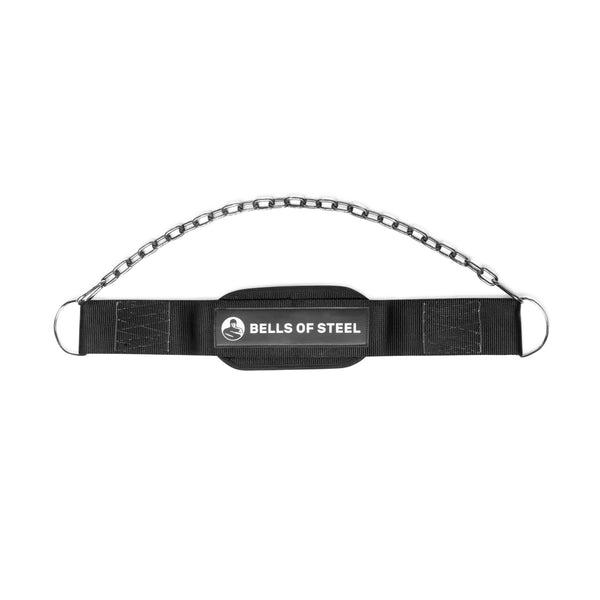For anyone focused on strength training, adding a dip belt to your home gym setup might seem like a small upgrade, but this simple strap and chain combo lets you safely stack on resistance for pull-ups, dips, and more.
Why does this matter? Because in strength training, progressive overload is the name of the game. To keep building muscle and increasing strength, your body needs new challenges. That’s exactly what a dip belt delivers: more resistance without bulky machines or expensive gear.
Whether you're doing high-rep callisthenics or chasing your first weighted pull-up, this overview will walk you through everything you need to know about the Bells of Steel Dip Belt.
Why Use a Dip Belt for Pull-Ups and Dips?
Pull-ups and dips are go-to bodyweight exercises. They’re simple, effective, and feel more natural than machines for a lot of lifters.
But when basic bodyweight movements start to feel too easy (we see you, 20-rep club), that’s a sign your muscles need a new challenge. A dip belt lets you add extra weight, unlocking progressive overload and keeping those gains rolling.
Don’t have a lat pulldown machine? No problem. With a pull-up bar, a few plates, and a dip belt, you can keep progressing right at home.
What Makes the Bells of Steel Dip Belt Different?
Many struggle under heavy loads, especially at the D-ring, which is often the first thing to fail.
The Bells of Steel Dip Belt was built to take a beating. It’s rated for up to 300 pounds, with reinforced stitching, double-layered durable material, and a thick, heavy-duty D-ring that won’t throw in the towel mid-set.
Plus, it’s padded for comfort and easy on the eyes. (Because there’s no reason gym gear can’t look good and work hard.)
Use it for weighted pull-ups, dips, or even improv belt squats with a pair of platforms. It handles it all - no sweat.
Dip Belt vs. Belt Squat Belt: What’s the Difference?
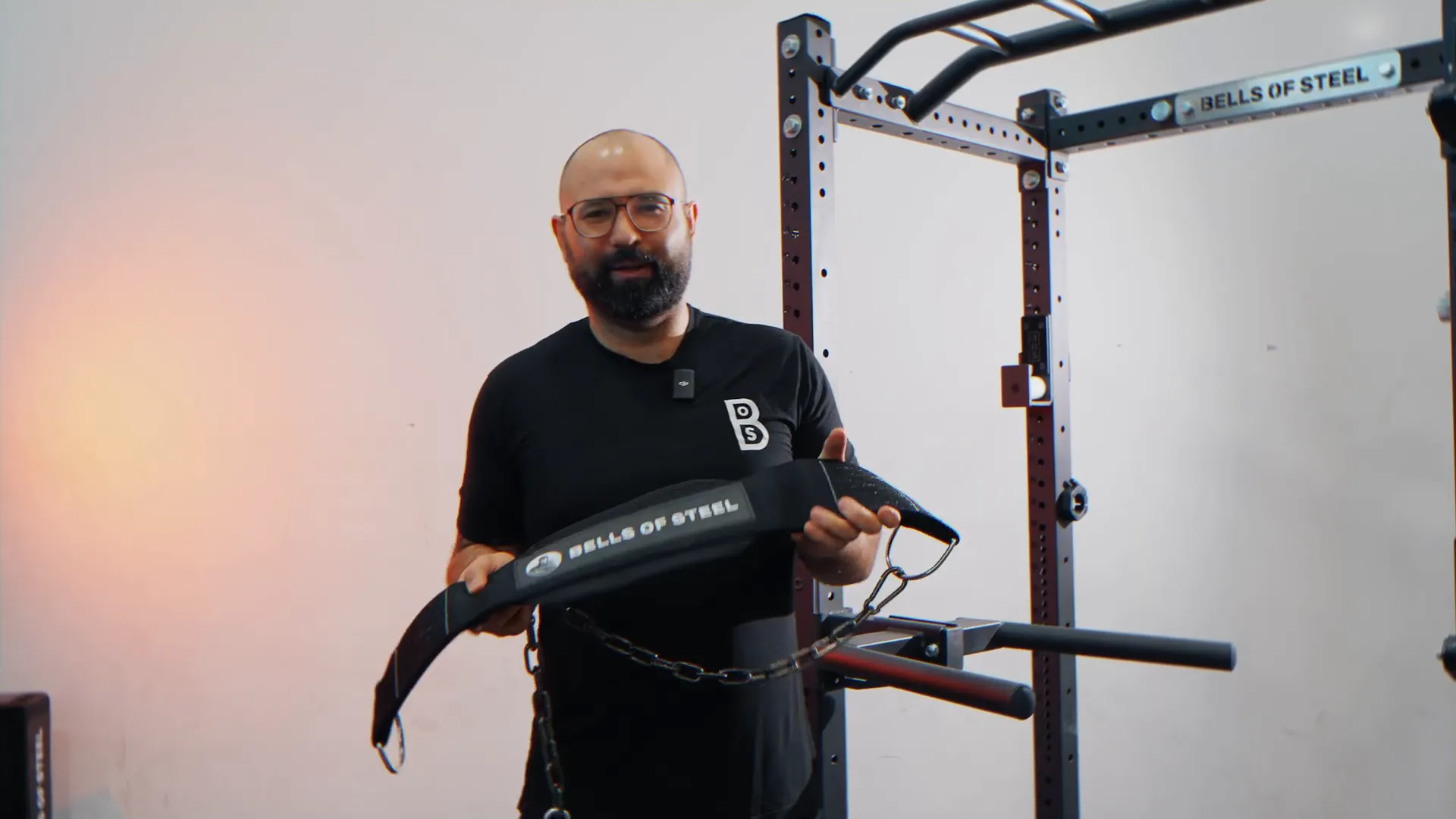
Bells of Steel offers two different belts: one for dips and pull-ups, and another for belt squats. Here’s how they compare:
- Rated for 300 lbs
- Great for weighted dips and pull-ups
- Shorter straps (can cause some chain rub during squats)
- Rated for 700 lbs
- Built for serious belt squats
- Extra-long straps to protect the thighs from friction
While you can use either belt for both purposes, it’s not ideal. Go with the dip belt for upper-body training and save the squat belt for serious leg days.
How to Use a Dip Belt
Using a dip belt is quick and simple:
- Thread the chain through the belt loops.
- Add your weight plates.
- Clip the chain with the carabiner.
- Tighten it up and start training.
The cinching carabiner keeps things snug and secure, so the belt doesn’t shift around mid-set. It’s easy to adjust and even easier to scale your workouts up or down as needed.
Final Thoughts: Add a Dip Belt to Your Strength Routine
The Bells of Steel Dip Belt combines strength, comfort, and smart design so you can train hard and stay focused on your goals. From a few extra plates to serious weighted sets, this belt’s got you (and your gains) covered.
